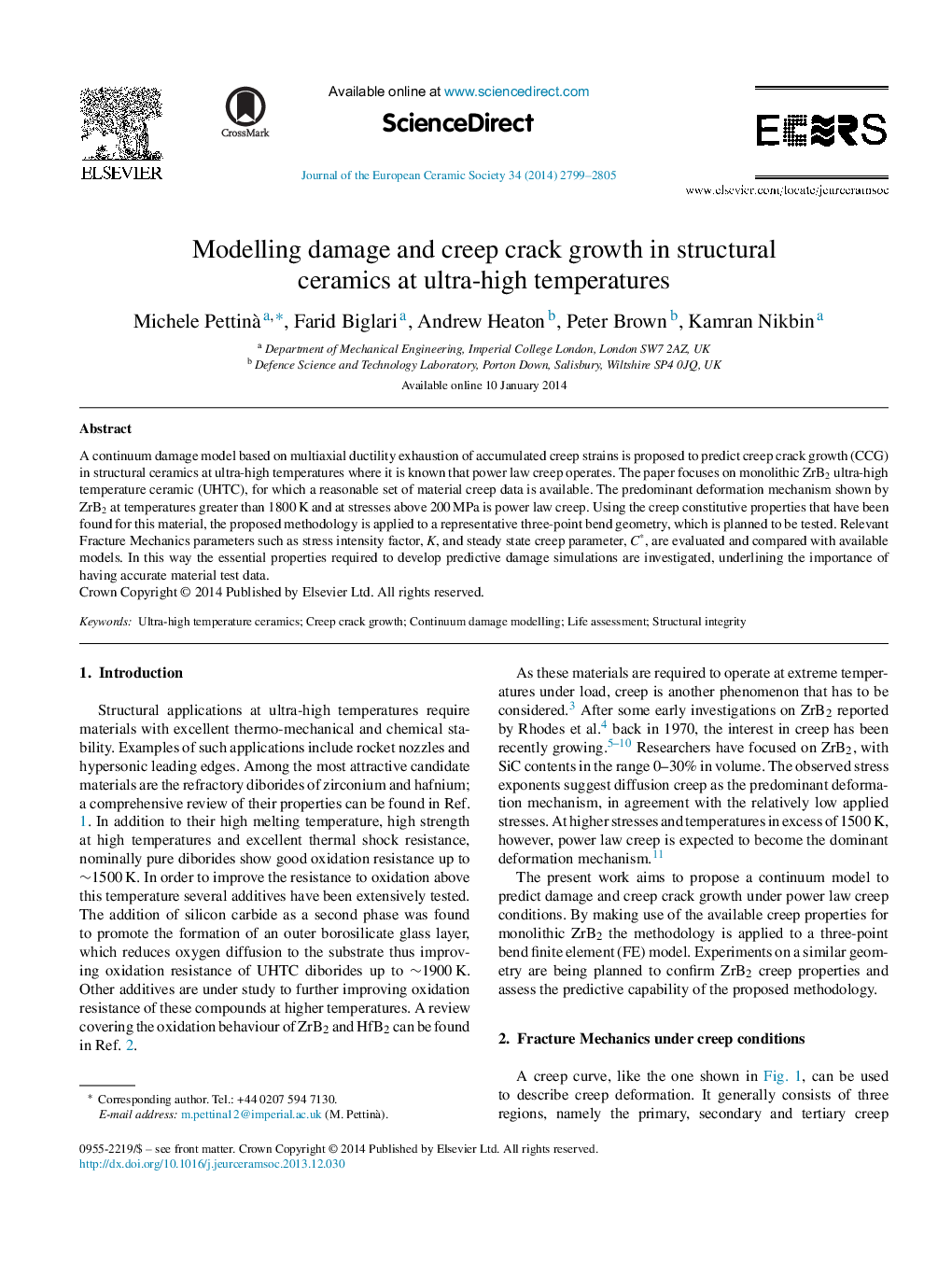| Article ID | Journal | Published Year | Pages | File Type |
|---|---|---|---|---|
| 1473950 | Journal of the European Ceramic Society | 2014 | 7 Pages |
A continuum damage model based on multiaxial ductility exhaustion of accumulated creep strains is proposed to predict creep crack growth (CCG) in structural ceramics at ultra-high temperatures where it is known that power law creep operates. The paper focuses on monolithic ZrB2 ultra-high temperature ceramic (UHTC), for which a reasonable set of material creep data is available. The predominant deformation mechanism shown by ZrB2 at temperatures greater than 1800 K and at stresses above 200 MPa is power law creep. Using the creep constitutive properties that have been found for this material, the proposed methodology is applied to a representative three-point bend geometry, which is planned to be tested. Relevant Fracture Mechanics parameters such as stress intensity factor, K, and steady state creep parameter, C*, are evaluated and compared with available models. In this way the essential properties required to develop predictive damage simulations are investigated, underlining the importance of having accurate material test data.
